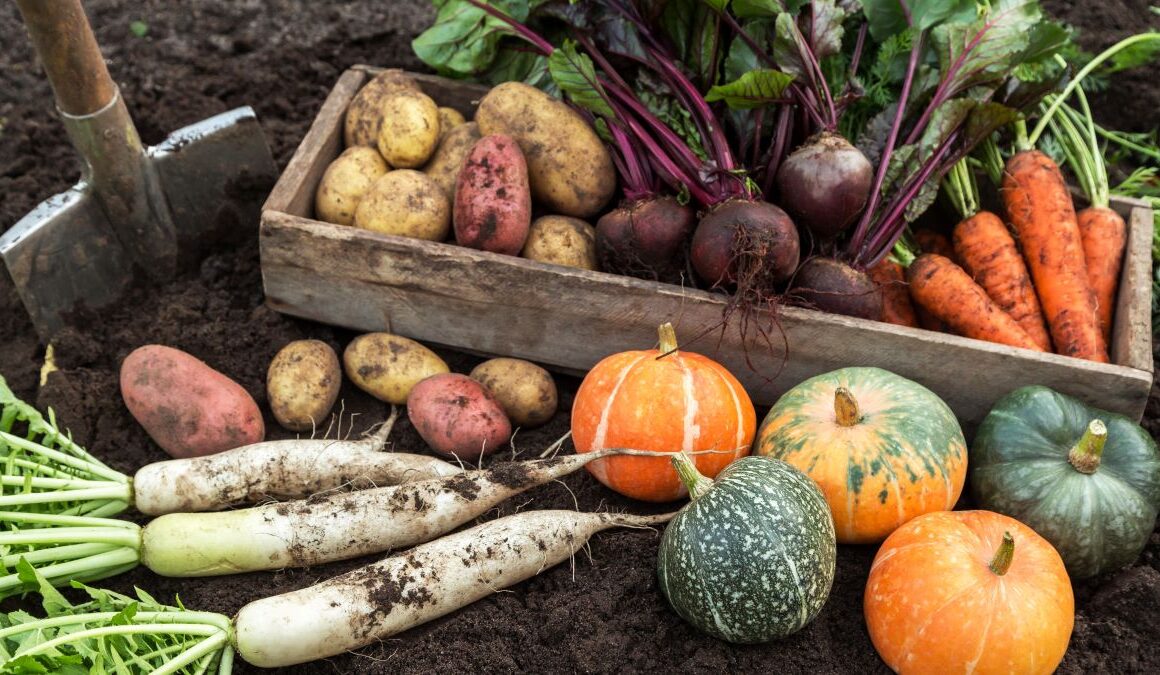Store the Fall Harvest Without Refrigeration or Canning
If you live in the northern United States, the growing season is coming to a close. So, if you want locally grown food available throughout the winter, it’s beneficial to store fall produce, such as potatoes, squash, and apples. Certainly, freezing, canning, pickling, and dehydrating are useful methods for preserving the garden harvest, but not everyone wants to take on those projects. So, let’s explore alternative ways to store the fall harvest for the winter months ahead.
Best Veggies and Fruits for Winter Storage
Not all veggies and fruits are created equal when it comes to storage heartiness, and some are much better suited than others. For example, leafy greens, such as lettuce and spinach, do not store well and it’s best to dry or freeze legumes and peas.
The first step in preserving the fall harvest involves growing or buying the best types of vegetables and fruits for storage. These include:
- Apples
- Beets
- Cabbage
- Carrots
- Garlic
- Leeks
- Onions
- Parsnips
- Pears
- Potatoes
- Pumpkins
- Radishes
- Sweet potatoes
- Winter squash
There is a wide variety of winter squash, and some varieties store well for longer periods than others. For example, acorn, delicata, spaghetti, and sweet dumpling squash can store for a couple of months, while buttercup, hubbard, kabocha, and butternut can keep for up to five or six months.
Of the tree fruits, apples and pears are definitely your best bet. However, avoid softer varieties because they are more likely to bruise, which will cause them to rot.
Some excellent storage apple varieties include:
- Cameo
- Fuji
- Gala
- Golden Delicious
- Goldrush
- Granny Smith
- Honeycrisp
- Ida Red
- McIntosh
- Red Delicious
- Rome
Storing Fall Harvest in a Root Cellar (or Cool Location)
If you are lucky enough to have a root cellar, this is a great way to conserve energy while preserving the fall harvest. It’s useful to learn about which conditions are best for storing different types of produce, as they all like slightly different humidity levels, temperatures, and other conditions. Here are some tips to get you started.
- “Cure” potatoes, winter squash, onions, and pumpkins for a few days in warm temperatures before placing them in the root cellar. This allows their skin to thicken, making them more storage hardy.
- Avoid storing any veggies while they are wet because it makes them more susceptible to mold and rot. Instead of washing your produce, brush off loose dirt before storing it.
- Space out veggies on shelves to allow air circulation and avoid spoilage. Consider using shallow boxes and storing produce in a single layer. Some produce, including beets and carrots, store well when placed in sand or sawdust.
- If possible, wrap apples and pears individually with paper to help prevent them from spoiling.
- Store potatoes in a dark place to prevent them from turning green.
- Cut the green tops off and pack beets, carrots, turnips, radishes, and rutabagas in damp sand or sawdust so they don’t touch.
- Check on your produce often and remove any items that show signs of rot to prevent it from spreading.
- Deter mice and other rodents from eating your harvest by plugging holes where they could enter your home.

How To Store Produce if You Don’t Have a Root Cellar
It is possible to store fall veggies, pears, and apples in other places, such as a garage, a closet on an outside wall, or a cool room in your home. Ideally, you want the room to be below 60° F but above freezing. If temperatures temporarily dip below freezing, using a picnic cooler might protect them.
Some squash stores relatively well at room temperature. One option is to display them for a splash of color in your home until you’re ready to eat them.
The Old Farmer’s Almanac recommends making a root clamp to store fall veggies in the garden without allowing them to freeze. “Instead of building a root cellar, just dig out holes in the hard ground to store cabbages, potatoes, and other root vegetables. Use hay in between each vegetable. Cover with a thick layer of straw, and then the dirt to keep out any frost. Then cover with more straw (a bale or two).”
Other gardeners report success with keeping carrots in the garden bed, trimming off the tops, and insulating them with 12 inches of mulch. This takes a somewhat similar approach to the root clamp by insulating the harvest with natural materials.
Storing Fall Produce for Greater Resiliency
Regardless of which options you use, avoiding the use of electricity for storing food helps increase your resiliency. If you are in an area prone to power outages, it will help you prevent food from spoiling. Also, reducing your reliance on electricity and eating locally grown foods conserves energy and helps you reduce your carbon footprint. And don’t forget to enjoy your bounty with some delicious fall recipes.


